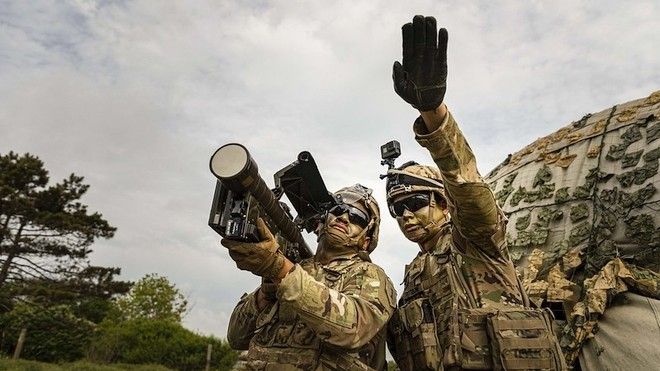Armed Forces
US Military Seeks Stinger Replacement. 8,000 Missiles at Stake

The US Army has initiated a procurement process aimed at acquisition or a replacement of the Stinger MANPADS. 8 thousand missiles could be potentially acquired, within the framework of this program. High-quality MANPADS could be offered by the Polish industry. Mesko facility, a part of the PGZ Group, is manufacturing the Grom MANPADS that has been exported to the United States of America already, as well as the new generation Piorun system.
The US Government announced that it has launched market research on the acquisition of new generation MANPADS. This is tied to the fact that the Stinger missiles that the USA owns are gradually becoming obsolete. Secondly, the spectrum of air threats on the contemporary battlefield is becoming much broader these days.
The Americans stress the fact that Stinger RMP missiles are going to become obsolete in FY2023. The Stinger Block I systems, meanwhile, are undergoing upgrades aimed at extending their lifecycles. The missiles are also fitted with proximity fuses. The US Army has been facing a significant backlog in the VSHORAD and SHORAD domain over the recent period - mainly due to the growing air threats and UAV threats that the potential adversary may create.
The analysis going on now is to get the Pentagon ready for procurement of new MANPADS. It is expected that an open competitive procedure is adopted for that purpose. The 8,000 missiles are to be a subject of a contract scheduled to be concluded in FY2026.
According to the content of the RFI, the new system shall be:
- Portable;
- All-Up-Round;
- Capable of being integrated onto the universal Stinger SVUL launcher that is a component of the IM-SHORAD system;
- Capable of acting against attack fixed- and rotary-wing aircraft and Group 2 and 3 UAV systems, in line with the US classification;
The US Army wants the MANPADS to be capable of shooting down relatively small UAVs weighing 21-55 lbs. (such as Scan Eagle). It is emphasized that its capabilities, within that scope, shall be equivalent or superior when placed along the Stinger missile fitted with a proximity fuse.
Furthermore, the solutions considered shall be tailored for being used in manoeuvre-driven land forces operations in different battlefield settings. They shall be safe, transportable, mobile, cyber-secure, the training activities shall be available, along with “human factor” and integrated logistics. They need to be compliant with the Full Material Release principles. The Americans also note that the system should be highly reliable and operationally available.
The last requirement on the list is the one requiring the contractor to provide an ability to manufacture the given solution on a production line, which may mean that the US side could be looking towards the acquisition of foreign technology to establish the manufacturing capacity domestically, as it has already happened in case of the AT-4 grenade launchers, originally developed by Saab and license-manufactured in the US now.
The American MANPADS procurement proves that systems as such play an important role in contemporary warfare, where the battlefield is becoming increasingly more saturated with UAS platforms or rotary-wing assets. MANPADS may be effectively used against the aforesaid set of threats, also being mobile and offering a high degree of employment flexibility, given they could be integrated on self-propelled launcher platforms as well (IM-SHORAD system that the US Army procured), along with the portable variant. The fact that the US military decides to procure a system as such is relevant here - there is no doubt, that the US Air Force is seriously capable. Having effective IADS is indispensable in a high-intensity conflict, due to the limitations imposed on the air assets (their being tied to airbases, for instance). Man-Portable Air Defense Systems are an indispensable element of the lower-level of the IADS.
The Polish industry is capable of manufacturing MANPADS-class weapons. New generation Piorun systems have been introduced in the Polish military since 2018, being delivered by Mesko. These are to complement, and, ultimately, replace the Grom MANPADS. Grom systems, meanwhile, have been exported to Lithuania, Georgia, Indonesia, or to the United States of America. The Piorun system could be potentially offered in the US procurement program. It shall be remembered that despite the principal “Buy American” rule, in some cases the US military decides to procure foreign weapons systems, potentially with acquisition process also involving a transfer of technology. So it happened for instance in the aforesaid case of the AT-4 launcher, but also when it comes to the Bonus artillery rounds, NSM missiles, and, potentially, the European Nemo self-propelled mortars could be a subject to “Americanization”. The US program can be viewed as a major opportunity for the Polish industry.
